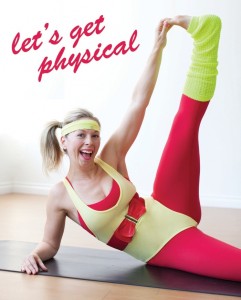- A person who poses
- A person who likes to be seen in trendsetting clothes in fashionable bars, clubs, etc.
- A person who attempts to blend into a specific social group
- A puzzling or baffling question
I’ll start this rant with a little disclaimer:
“Everyone does not have to like everything.”
We all have our own share of experiences which form the basis of our opinions. That said, I’m going to be honest with you… I don’t like yogaerobics classes – I think they’re really boring. I know that saying this is a faux pas in some circles but I don’t care.
Some people will argue that sometimes you just need to move, so who cares how you do it? But if that’s the case, then why – out of ALL of the things you could do, then why choose yoga? If you just want to move then why not EXERCISE? Like running, or gymnastics or any other physical sport?
Part of the answer stems from the numerous studies in recent years highlighting the health benefits of yoga. They’ve been very effective in steering people towards trying yoga, but it’s only one piece of the yogaerobics puzzle.
There is so much money invested in blinding people from their true potential. People are being coerced into buying into the yogaerobics trend. Magazines and newspapers present us with well-crafted ideas of what it means to be socially accepted. If celebrities do it then it HAS to be cool, right? The groupthink mentality encourages people to become part of a scene. To create a scene is to create a market. (Mental health tip: don’t watch television).
The yogaerobics industry is designed to foster the “see and be seen” mentality. It plays upon people’s insecurities so they get wrapped up in their appearances, so they’ll buy $200 stretchy pants and brand name accessories. The overemphasis on the physical leaves little room for contemplation of the subtleties of the practice.
Even basic comprehension gets skimmed over in yogaerobics classes. I recently took a poll at a studio that specializes in vinyasa classes. I was curious to see how many people actually knew what the word ‘vinyasa’ means. Out of six classes only a few people knew that it means linking movement with breath. It was totally mind-blowing for me. I couldn’t help but wonder how did this happen? How did so many certified yoga instructors manage to create such a huge gap in the general public’s comprehension?
It’s been three years since I wrote this article and I’ve revised it to reflect my current viewpoint. The challenges I described back then are still prevalent today. I’m not sure if there’s anything to do about them (other than what I’m doing now). If you have any insights to share on this topic feel free to leave a comment in the box below.


Yes I’m sure yogaerobics has been over marketed and distorted, but I have back and neck problems, and I do regular yoga, but also I do my own combo of yogaerobics, I can exercise and stretch at same time which really helps with my back/neck problems and my arthritis. I can’t do regular exercising without making my body worse so for me yogaerobics is a nice alternative. I’m only 30 but have had scoliosis for 16yrs, and just doing yoga doesn’t get rid my extra weight. So ya its over marketed but for some of us it works
It’s really interesting to revisit this article. Of course the health benefits of yoga work, that’s one of the primary marketing tactics of the industry! I’ve also used asanas for addressing scoliosis-related chronic pain. It’s a good first step but it’s not the final destination. Keep going!